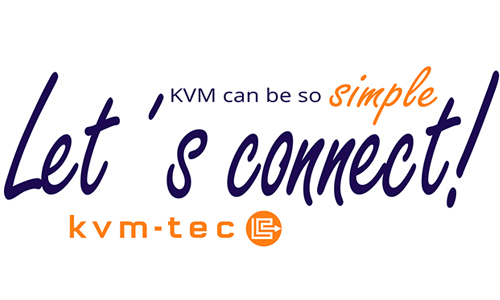KVM systems at low density are easy to manage, there is need to have deliberate installation and configuration by the administrator for at scale management. A small number of KVMs are manageable by the use of necessary tools like the command line, the Graphical user interface or On Screen Display (OSD menu). When an administrator wants to employ KVMs on large scale where thousands of servers or PC-targets are available, the administrator needs to employ careful measures like deliberate installation, continuous optimization, and careful configuration. This is because massive scale deployment requires cautious maintenance and servicing. A standard host software for building the desired KVM environment is necessary for the administrators to have a good and manageable system. A plan is required whenever an administrator wants to manage KVM at scale. “If you plan on expanding your network, always remember, you have to expand your bandwidth too” said Degenhard Trubacek network support engineer at kvm-tec. Some issues can create a nightmare scenario that damages the quality of the KVM deployment, and they include haphazard, unchecked growth and bandwidth bottlenecking. Therefore, to avoid these problems administrators need to have a standardized deployment for KVM hardware, they need to build the environment with scale in mind, automate the building process to save time and limit the manual interactions. Administrators’ would benefit from using kvm-tec’s Switching Manager Software which will support simple live migration, firmware updates and configuration access rights will also be required for there to be easy updating process.
Need for a dedicated network
There is need to have a separate dedicated network, and this is because High-performance KVM solutions have adopted a transformed way of implementing KVM. A standard network is required as the core infrastructure of its matrix systems, for there to be flexibility and scalability of the system. The need for having a dedicated network when building a matrix switching system is highly required. The matrix is a combination of switches and extenders enabling the user to have admittance to multiple computers over console, and the management tool regulates them all. Ensuring that there is a dedicated network for the KVM extenders and switch is a pivotal point when configuring a matrix network. The dedicated network is a connection that is not shared, and is more secure, as they can be isolated from the public internet (Rutkowski, Bassett, & Bellwood, 2016). A dedicated network has only its commitment on the packets of data transfers from transmitter, to the switch and to the receiver, ensuring that there is no disruption and less latency between switching. “KVM matrix system is using the full bandwidth of the network switches, e.g. 1GBit for full HD devices and 10GBit for 4k devices. This bandwidth has to support from and to any endpoint in the system. This is only possible to use structured cabling technics all over the system. When the network is used for other IT purposes, it could happen that there is not enough bandwidth left”. Said Dietmar Pfurtscheller, CEO kvm-tec.
In conclusion, KVM is a device that provides a various range of solutions and can be a great administrator tool to help manage the network. To reach the full potential of a KVM extender, there needs to be a dedicated network and always remember, “When you expand your network, you need to expand your bandwidth”.
If you have any questions regarding your network, switch configurations, solutions or you want to know more about KVM’s, please contact kvm-tec at [email protected]. When you want to know more about kvm-tec, please visit https://www.kvm-tec.com/en/











